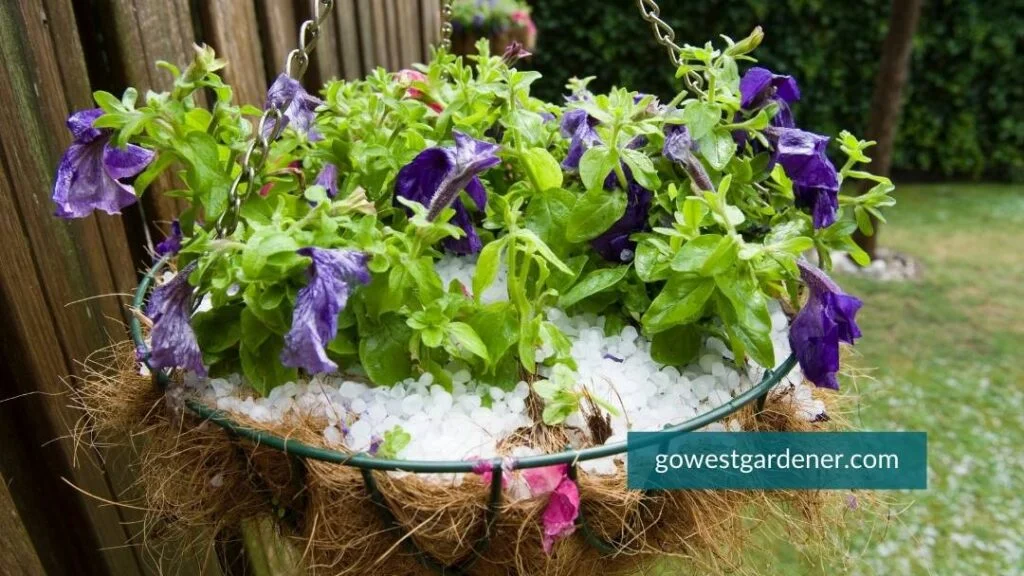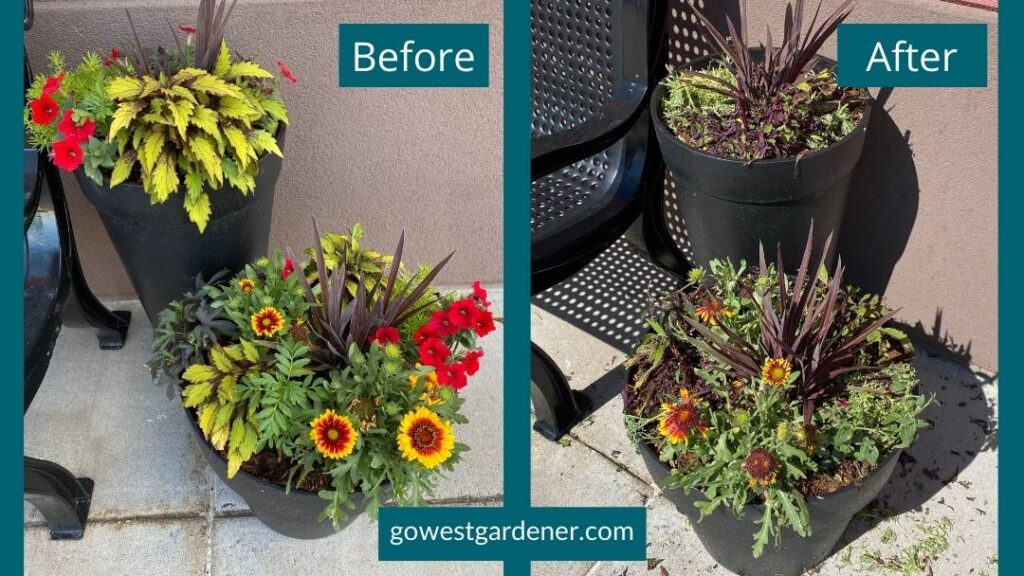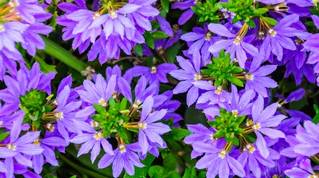In my opinion, there is nothing that will suck the soul from your gardening body like hail
You can have your flowers looking SO DARN GOOD … And after a few minutes of hail, your Instagram-worthy flowers have become a sloppy, shredded mess.
Ugh.
Mama Nature doesn’t always play nice.
If hail destroyed your garden or your flowerpots, I’m so sorry. It’s demoralizing. You may be at a loss for where to even start cleaning up the hail damage.
If you’re wondering, “What do I do now?”, let’s chat about how to care for your plants after hail.
1) How to reduce your plants’ stress, so they perk up
Prozac for plants
It may be weird to think that your plants can get stressed, but they can. And a hailstorm counts as a VERY stressful event for your flower garden — not to mention, for you too!
Luckily, there are products that can help.
The micro-nutrients in seaweed and kelp can help your plants reduce stress. You may want to give your plants a mild, liquid plant food that contains seaweed or kelp, like Age Old Fish & Seaweed or Age Old Kelp.
Think of these products like Prozac for plants.
Your local, independent garden center should carry products that can help with plant stress too. If you visit your local store, ask them what they have in stock that they recommend for reducing plant stress.
2) How to clean up your perennials after hail, so they stay healthy
Perennials are your plants that return every year
Let’s chat about the hail damage you may see on your perennials.
Is there a lot of debris on the ground?
Rake it up. If you leave it, it can collect moisture and be a home for pesty insects or disease.
Do your perennials have broken stems?
If yes, trim off those stems. Take your finger and run it down the stem BELOW the break. Stop just above the first set of leaves you reach or at the first intersection with another stem. This is where to make your snip.
Did the hail break or destroy your flower blooms?
If yes, trim them off too.
Similar to trimming off broken stems, take your finger and run it down the stem below the destroyed flower bloom. Stop just above the first set of leaves you reach or at the first intersection with another stem. This is where to make your snip.
(Are you familiar with “deadheading?” This is basically what you’re doing here.)
Do you see tattered or hole-y leaves?
If the leaves are really shredded or dangling, cleanly trim off.
But if your leaves have mild damage, you may want to leave them. Why? Because the leaves are where photosynthesis happens. This is where your plant is making food and energy for itself, so it can grow new leaves and/or return next year.
Are your perennials bent over, but the stems aren’t broken?
A few days of sun and water may help your plants perk up. (It depends on the plant.)
There are some perennials you can aggressively trim back, and they should grow new leaves and flowers.
Two examples are Salvia (Salvia sylvestris) and Catmint (Nepeta), pictured below.
You can cut these plants back to just above the first or second set of leaves from the ground. They should push out new leaves and flowers for you over the next 3-4 weeks.
Don’t shear (cut) straight across the plant, though. Instead, trim each stem just above a leaf — like you’re deadheading.
Keep these plants well-watered after you give them an aggressive haircut.
It’s worth noting that timing matters.
Later in the summer, it’s best if your plants focus on getting ready for winter, rather than using their energy on new growth. If you get your hailstorm in the latter half of the summer, you may not want to aggressively trim back your plants. I know they may not look the best after hail, but this way, they can put their energy into becoming more “hardy” for winter.
If you’re unsure whether to cut your flowers way back or not, take photos before you go to your garden center for “plant Prozac.” Show them your photos and ask whether you can aggressively trim back the plants in your garden.
3) How to clean up your annuals after hail
Annuals are your one-summer flowers
Your clean-up depends on how bad the damage is.
Just a few minutes of hail can make a real mess of annuals.
In the photo below, you’ll see a before and after picture of flowerpot hail damage. This is what flowerpots look like before and after hail. Oye!
The flowers that held up the best are the center red plants (Cordyline Spikes) and the red and yellow flowers in the foreground (a perennial known as Gaillardia or Blanket Flower). But most of the annuals in these flowerpots are in rough shape.
So, what can you do?
You can always follow all the steps above to see if they help. If the damage isn’t too bad, your plants may bounce back in a few days.
But if your annuals are mushy or they just don’t bounce back over the next few days, I’d pull them out.
Composting is a topic for another time, but if you do have a compost pile, you should be able to add these plants to the pile. To ensure you’re adding healthy plant remains to your compost pile, the key is to clean up soon after the storm.
If your hailstorm happens early in the summer…
You can plant new annuals.
Later in the summer…
The garden centers should have pretty flowers that look autumn-y. You can plant them if you’re really missing the color.
Otherwise, wait until next year and give it a fresh start.
4) Take photos
I know the last thing you may want to do is document the devastation, but we tend to have short memories as gardeners.
Or maybe we just block hail damage out of our memories!
It’s helpful to take photos of your plants before you clean them up, so you remember which plants did better in hail than others.
Then, create a folder on your phone called: Garden Hail Damage. Put the photos in it, so they’re easy to find.
If you continue to get hail storms, you may want to transition to plants that are more hail-resistant.
A word of encouragement…
I have a flower lover on my email list who closely followed all these tips after a “heartbreaking” hail storm last summer. She said her plants came back bigger and more beautiful than before the hail storm.
So, please know, there’s hope!

















